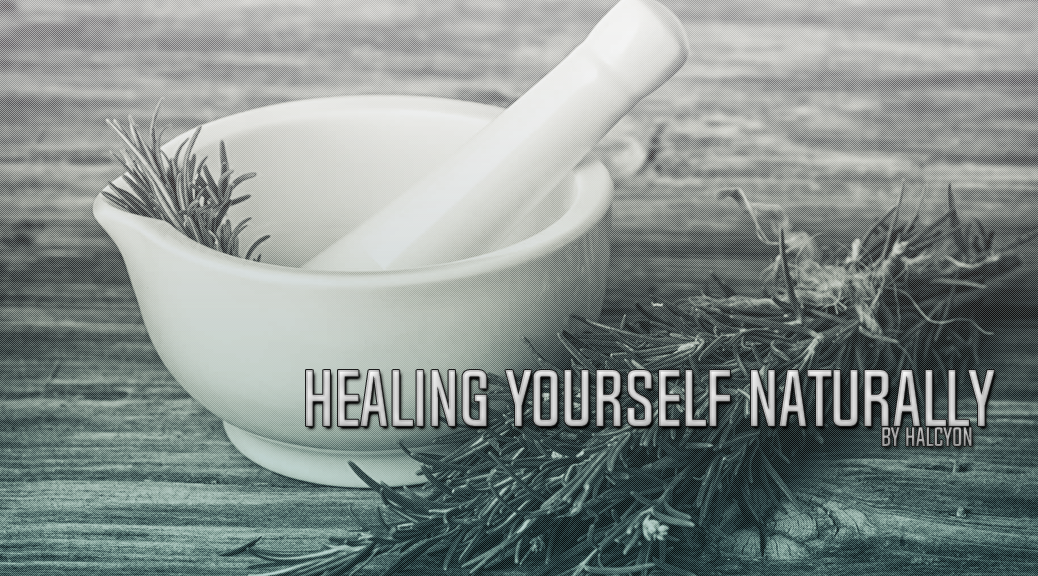By Halcyon
Whole Beauty is taking a break, but don’t worry – Halcyon’s launching a series of new series, all designed to keep you at your best!
Please note that, as with Whole Beauty, this column explores practices that may not be appropriate for everyone. In addition, the advice given here is not intended to replace a visit to your doctor – much of the modern research into the efficacy of natural remedies is still in its early stages, and not all results seen in the laboratory translate to the real world. Remember that no matter what changes you’re considering, it’s always best to discuss them with your doctor or other health care provider, as he or she will be in the best position to address not only your personal needs and special concerns, but also the safety of alternative treatments, as herbs and supplements may interact both with medications and each other – however, if you’re interested in natural healing, we hope this article will provide you with some opening discussion points!
Healing Yourself Naturally:
An introduction into alternative medicine
In a day where the rising cost of medical insurance is making it difficult for many people to visit a doctor or clinic and pharmaceutical companies are hijacking their wallets, the area of alternative medicine is capturing the attention of a much wider audience. Holistic care is no longer being viewed as a relic from the past – a hobby to dabble in or something our great-grandparents practiced because their health care resources were limited. Even science is backing up the benefits of alternative medicine as something that can be used use in conjunction with modern medical treatment.
In this progressive series, I’m going to give you a tour of the Modern Herbalist Apothecary – common herbs you may find nearby to use for the treatment of minor illnesses and injury, and even some that, in conjunction with a physician’s treatment plan, can help you feel better, faster. I will be giving a broad overview of some of the common approaches of alternative medicine and how they differ from one another, and what you could label as more popular. We will take a look at the science behind what makes these herbs so special and how you can use it. I hope this information enlightens you and encourages you to investigate the fascinating realm of alternative medicine.
Stocking a Modern Apothecary
There are quite possibly thousands of herbs that you could use stock to a modern apothecary, if you had access to them all. I am going to pick my favorites and give the highlights of that herb, what it is, why it works and how to use it.
Nature’s 11 Most Powerful Antibiotics
• Apple Cider Vinegar
• Garlic
• Ginger
• Horse Radish Root
• Onion
• Habanero Peppers
• Oregano Oil
• Tumeric
• Echinacea (Herb)
• Raw Honey
• Colloidal Silver
Apple Cider Vinegar (ACV)
• A known super food with incredible healing properties.
• Vinegar has been used for centuries as a natural remedy to fight infections.
• ACV is also used for its benefit in beauty, from hair to sun burns.
• Some even use ACV as a cleaning product.
• It’s loaded with antioxidants, vitamins, minerals and enzymes. However, not all apple cider is created equal.
• This is what you need to know: Don’t reach for the clear, amber vinegar. You want the one that looks murky and has “sediment” floating in it.
• That murky substance in the vinegar is actually called the “mother,” which means it still contains the beneficial compounds (including antibiotics).
5 Important Benefits of Apple Cider Vinegar
• Lowers blood pressure: Studies show ACV may lower blood pressure and promote heart health.
• Balances Blood Sugar: The acetic acid found in ACV can help balance blood sugar levels and improve diabetes.
• Aids Weight Loss: Studies show ACV to promote fat loss and reduce sugar cravings.
• Fights Colds: ACV is loaded with immune boosting vitamins and antioxidants that keep you healthy.
• Promotes Good Gut Bacteria: ACV contains probiotics [“good” gut bacteria] and a type of acid that promotes the growth of probiotics.
How to use it:
• 6 ounces water
• 1 tablespoon ACV Organic/with the mother
• 2 ounces cranberry juice
• Splash of lime juice
Garlic: Antiviral, Antibacterial and Antifungal
The magic of these three properties make garlic an excellent combatant against a variety of colds, flus, and illnesses. It contains vitamins such as B1, B6, C and A, which are excellent for keeping your immune system rocking.
Garlic (Allium sativum)
• Has been used for medicinal and culinary purposes in countless cultures for thousands of years. It is known to have treated and prevented a wide range of conditions and diseases.
• Allium sativum, aka garlic, is a species in the onion genus, sometimes called “King of the vegetable kingdom”.
How to use it:
Optimum Use: In order to get the maximum benefit of garlic – its antibiotic effect – crush garlic at room temperature and allow to sit 15 minutes. This gives the enzymes time to react. Never cook garlic at high heat – try consuming it raw or cooked very lightly.
Ginger: The Amazing Underground Root
Actually, ginger is a rhizome (an underground stem). It can be dried into a powder or consumed fresh, both with similar benefits.
The Science Behind the Benefits:
Ginger root contains a number of compounds such as gingerols that are able to prevent or reduce immune cell synthesis of cytokines that cause inflammation. (Source: Dr. David Hoskin, Phd.)
Dr. Hoskins is currently investigating how ginger can help people who have diseases caused by chronic inflammation, and how those properties might also protect against cancer.
How to use it:
Add grated ginger into sauces and marinades. Toss a one-inch chunk into smoothies. Infuse in water for tea.

